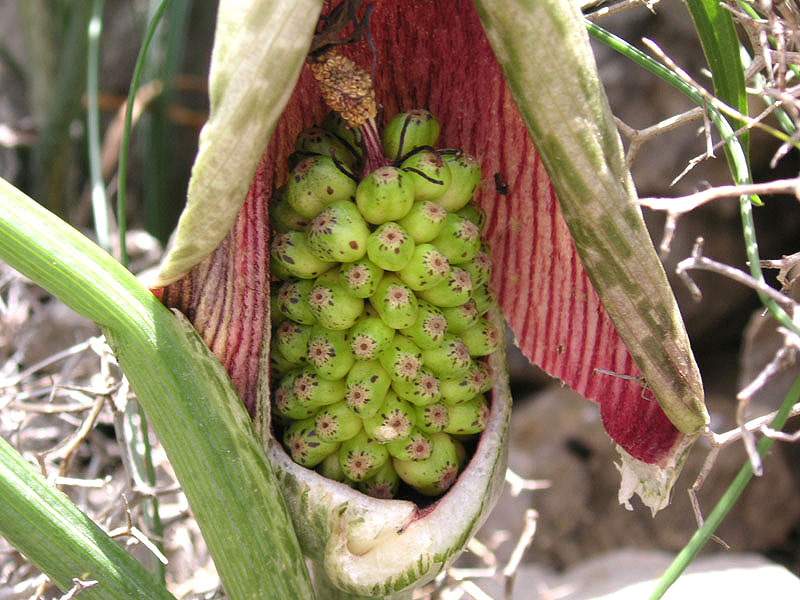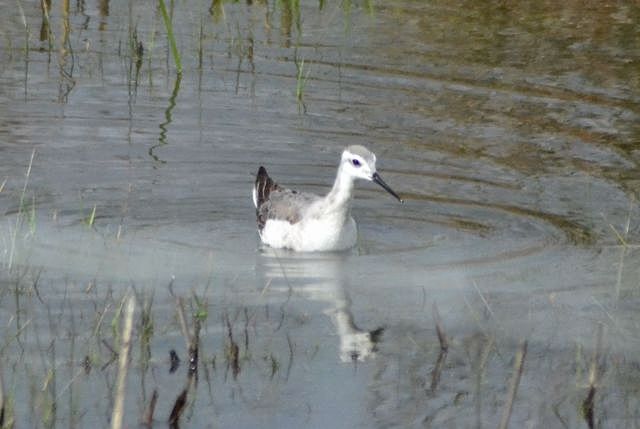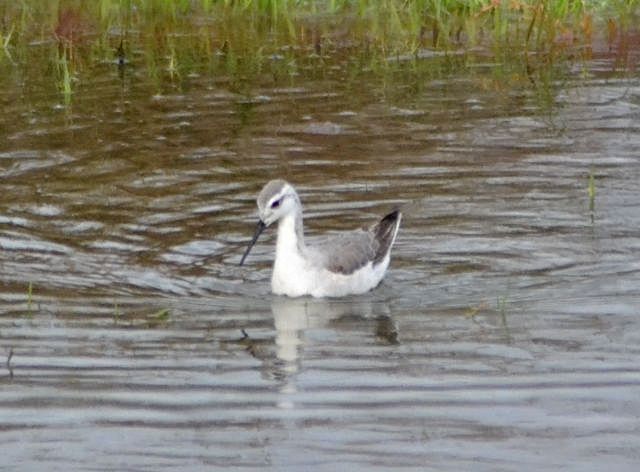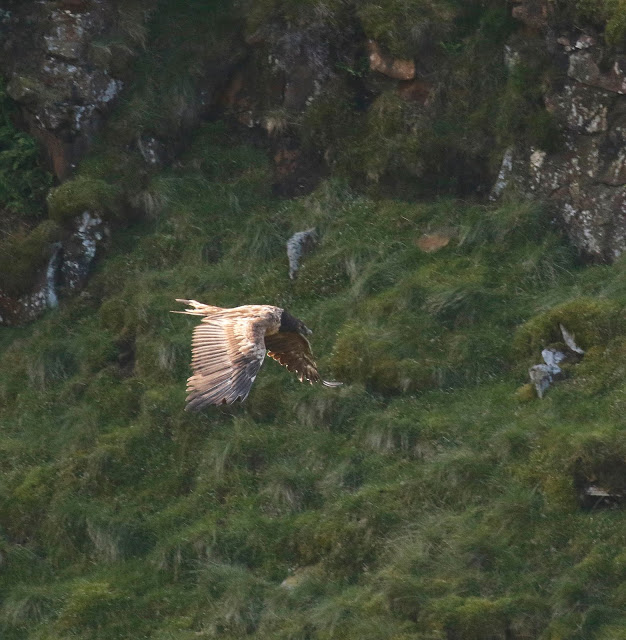Over successive days this week I have taken the opportunity to track and record the fruiting cycle of an uncommon English mushroom, the enigmatic and tantalisingly attractive Magpie Inkcap (Coprinopsis picacaea), in Beech woodland in the Oxon Chilterns.
This began when choosing somewhere to go on Sunday (25th), a sunny first day of the detested dark season, I opted for a location near Nettlebed where Firecrests (the bird) might be found. After wandering around for a bit I met an enthusiast who was photographing something in the leaf litter with quite sophisticated paraphernalia. Guessing that must be fungi I engaged with him and he pointed out first some red Sickener mushrooms and then Magpie Inkcap (pictured below) growing from beneath a fallen log.
My researches now suggest it is quite unusual to find such a group since fruit of the latter fungus most usually occur singly or are at least well spaced. Having been introduced to this interest myself recently I soon forgot about the initial purpose giver for being there, and why not? The insect season is over for another year and the national birding action, though exceptional continues to occur mostly in the remotest outposts of the British Isles, way beyond both my preferred distance range and means. To put things another way I was in an apt frame of mind to be receptive to some late autumn fungi.
I had first come across Magpie Inkcap in another nearby Beech wood two years ago (pictured below). This thing of dark and delicate beauty occurs infrequently in much of the British Isles, but is found throughout continental Europe most usually in areas with alkaline soil and especially Beech woods, as well as in parts of North America; not to mention in the Chilterns.
Monday (26th) was the only forecast sunny day of the week ahead and so I returned to the same place. Exploring a little further I became amazed and captivated in equal measure by the sheer quantity and variety of colourful, alluring and photogenic fungi all around the forest floor. Things soon felt similar to being back in Portugal or the south of France seeking out and taking pictures of insects. The Inkcap group of the previous day had evolved into the large bell shapes (pictured below) and my curiosity was suitably piqued.

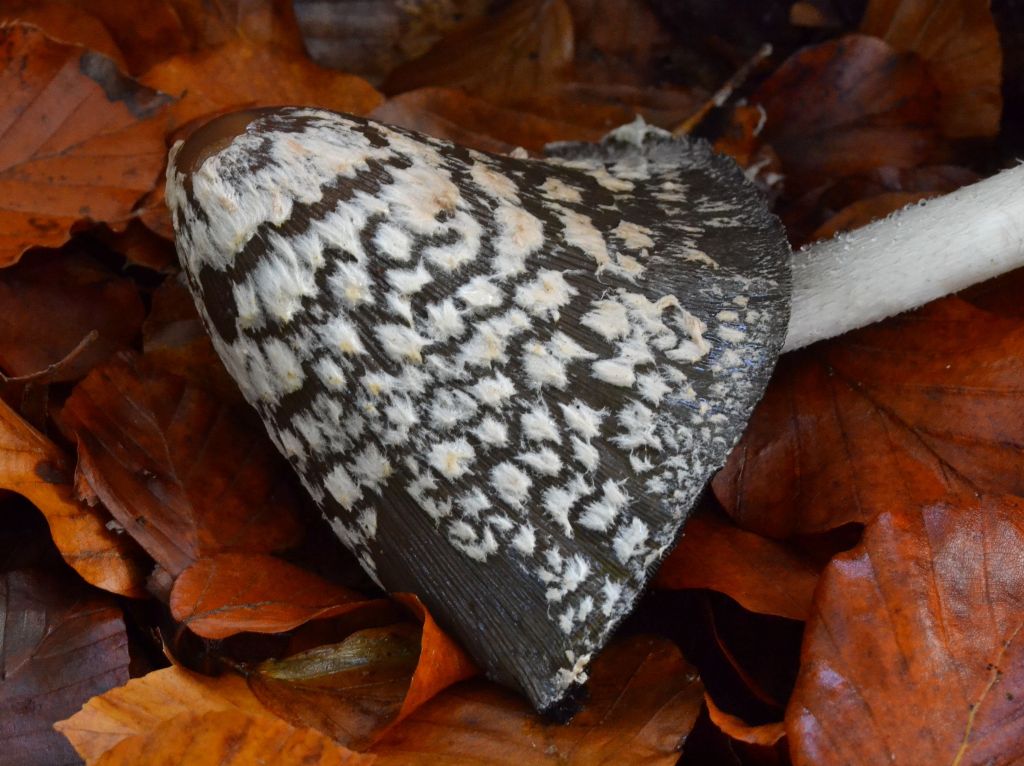
Reading up on things when I got home, I learned the poisonous Magpie Inkcap fruit bodies evolve through a sequence of shapes – egg to gherkin, then opening up to bell-like – through their short lived emergence. The patterning of white or silvery grey breaks into separate patches to reveal the glossy dark brown background as the reproductive cycle of spore dispersal progresses. The stalk is white, hollow and not very stable, slightly tapered towards the top and covered with scales. Eventually, at around day four by my observations the brim of the cap rolls up and dissolves, then the cycle is complete and the stalks collapse.





Over the six days covered by this post I observed that sequence in three different specimens near by that initial group at Highmoor Common Wood (SU704856). This is presented in the mixed sequence above, captured wearing waterproofs and with the aid of a garden kneeler as I performed contortions in the leaf litter on the damp forest floor. At one point a passer by just had to call out: “Are you all right?” and yes thank you I was.
The following individual sequences show the daily progress of two of the Magpie Inkcap I tracked. At least in this study period, which was punctuated by heavy showers and spells of prolonged rain, there appeared to be a four day fruiting cycle that possibly shortened as the wet conditions persisted. I have used simplified language in discussing all this. For a more scientific treatment see here.



The second sequence (above) illustrates perfectly the four part cycle observed in each specimen, through egg to gherkin then into bell shape before the fruit begins to dissolve and collapse. But this further example #4 (below) was perhaps the finest of them all. One after another through six days I witnessed these emerging through the leaf littler from the underground network of threads that forms the main structure of this group of fungi, to put on the superb show recorded here. I felt glad indeed to have experienced something truly new and different in nature as winter commences.
On Wednesday (28th) I also checked out another woodland, Icknieldbank Plantation (SU668915) on the Chiltern Ridgeway below Swyncombe Down, finding another cluster. The only fruit here not to have gone over was a partially scale free specimen (pictured below) that I revisited the following day but did not track through the full cycle.




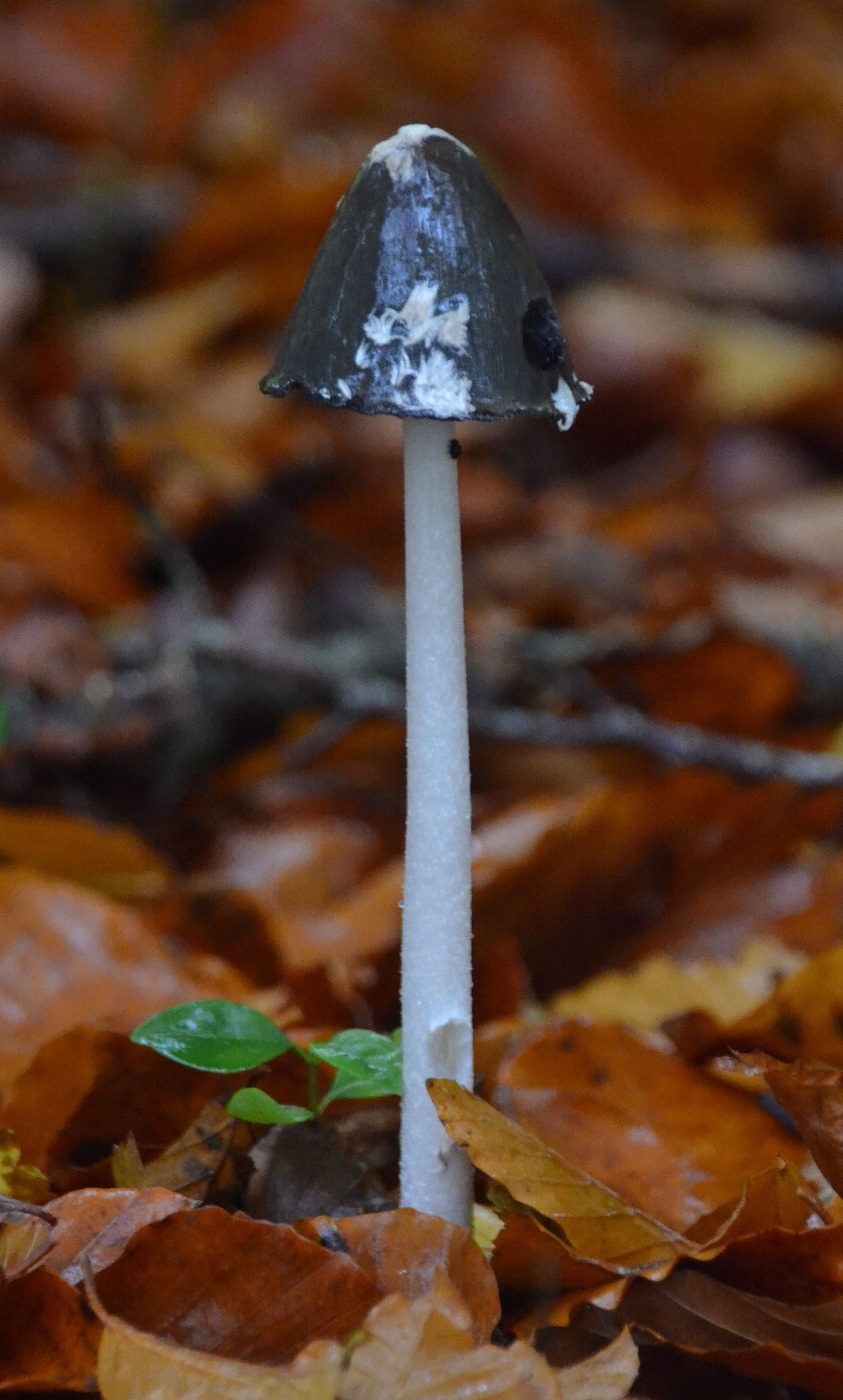
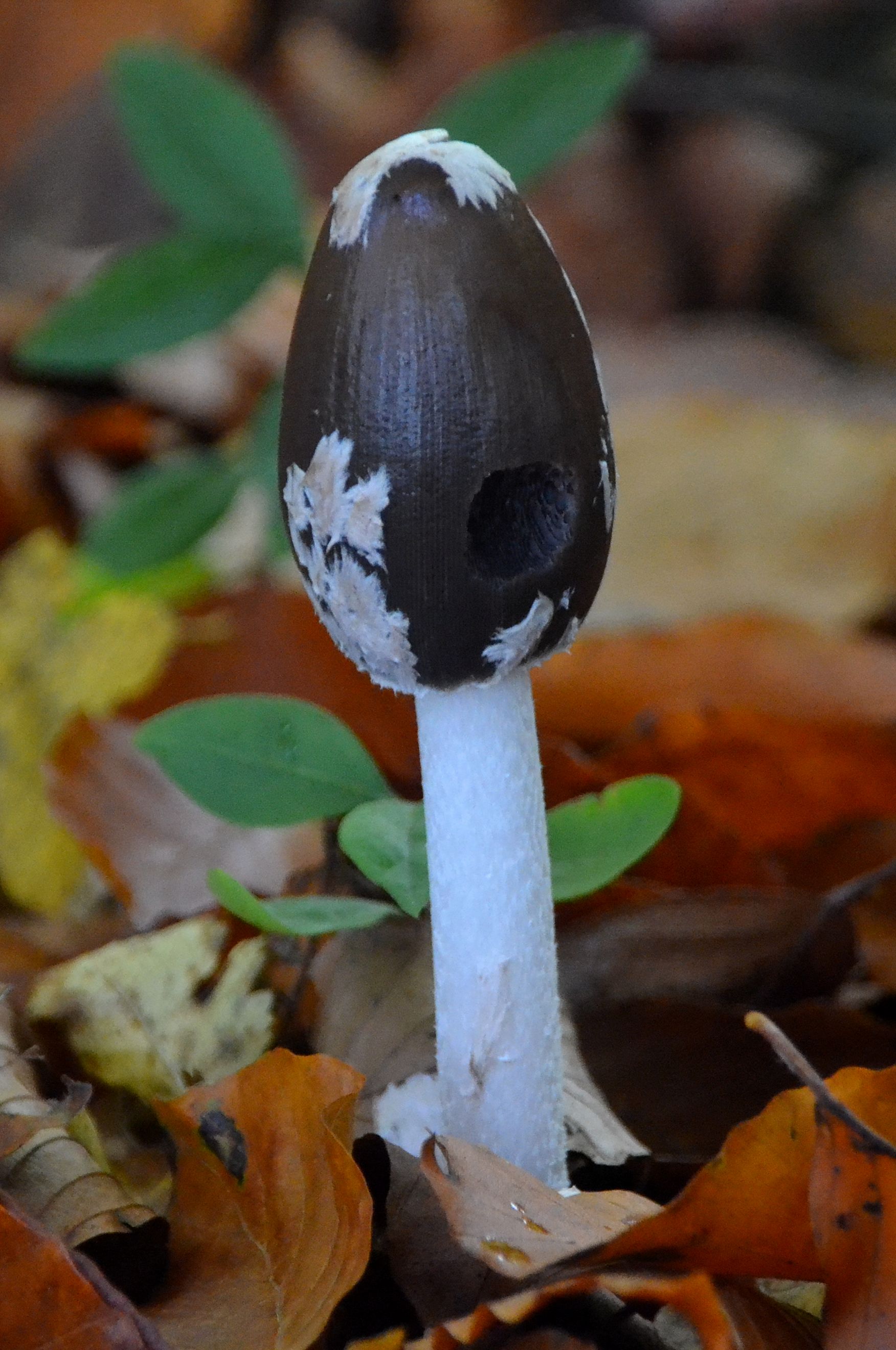
In my limited experience of fungi, the Magpie Inkcap of this post is definitely my favourite to date. But the Highmoor Common site was populated by an array of other highly attractive, weird and wonderful items. This has been a very welcome diversion and project through the first week of winter, and something I will definitely take more interest in come the autumn of 2021.


















